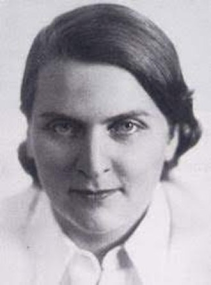As recently as 1975, women made up only 5% of the veterinary profession.1 By 2010, however, women made up roughly 50% of the profession; and today, approximately 61% of practicing veterinarians in the United States and 80% of American veterinary school students are women.2 This increased female presence in the veterinary field didn’t happen randomly, nor overnight. Several trailblazing female veterinarians and scientists paved the way for the women of today to pursue their dream of working with animals. In honor of Women’s History Month, we’re looking back at several of those inspiring women in remembrance of their contributions to both the veterinary field and the overall advancement of women’s professional rights.
Dr. Elinor McGrath | Widely considered one of America’s first female veterinarians, Dr. Elinor McGrath was born in 1888 and became the first woman ever admitted to Chicago Veterinary College in 1907. She endured bullying and harassment from schoolmates, but persevered and graduated in 1910—a decade before U.S. women were granted the right to vote. Following graduation, Dr. McGrath ran a small animal practice in Chicago and became known for her animal-friendly practices. During her several decades as a practicing veterinarian, Dr. McGrath also established the city’s first pet cemetery, inspired by her understanding of the everlasting bond between people and their pets.
Dr. Jane Hinton | When Dr. Jane Hinton graduated from the University of Pennsylvania in 1948, she became one of the first two African-American women to earn the degree of Doctor of Veterinary Medicine. Prior to becoming a veterinarian, Dr. Hinton worked alongside her father—Harvard University’s first black professor—and invented a medium that would go on to be known as Mueller-Hinton agar. The medium was (and still is!) used to grow bacteria to test for resistance to antibiotics. From shattering racial barriers as a veterinarian to developing crucial advances that remain a cornerstone of biology to this day, Dr. Jane Hinton literally changed the world.
Dr. Aleen Cust | At the beginning of her career, Aleen Cust trained as a nurse at London Hospital, but she eventually gave it up to train as a veterinary surgeon at what would later become the University of Edinburgh’s Veterinary School. Studying under a fake name to spare her family any embarrassment, Aleen finished at the top of her class with a degree in zoology. However, despite finishing higher than her male peers, Aleen was banned from sitting for the Royal College of Veterinary Surgeons exams due to her gender. Unable to gain an official degree, Aleen's pursued work as a veterinary assistant instead. She worked as a bacteriologist with an equine unit during WWI and in 1919, when she came home from the war, she was finally allowed to take the RCVS exam thanks to the Sex Disqualification Removal Act that passed that same year. Aleen finally became Dr. Aleen Cust and became the first women to be recognized by the RCVS.
Sources:
1, 2. https://www.avma.org/news/press-releases/avma-celebrates-trailblazers-current-leaders-during-womens-history-month
https://be.chewy.com/meet-the-badass-women-whove-redefined-veterinary-medicine/
https://www.hereford.ac.uk/news-and-events/blogs/aleen-cust-how-the-struggle-of-t/
https://www.thevetiverse.com/en/latest/women-s-history-month-celebrating-influential-women-in-veterinary-medicine/#:~:text=Elinor%20McGrath,enter%20the%20male%2Ddominated%20field





